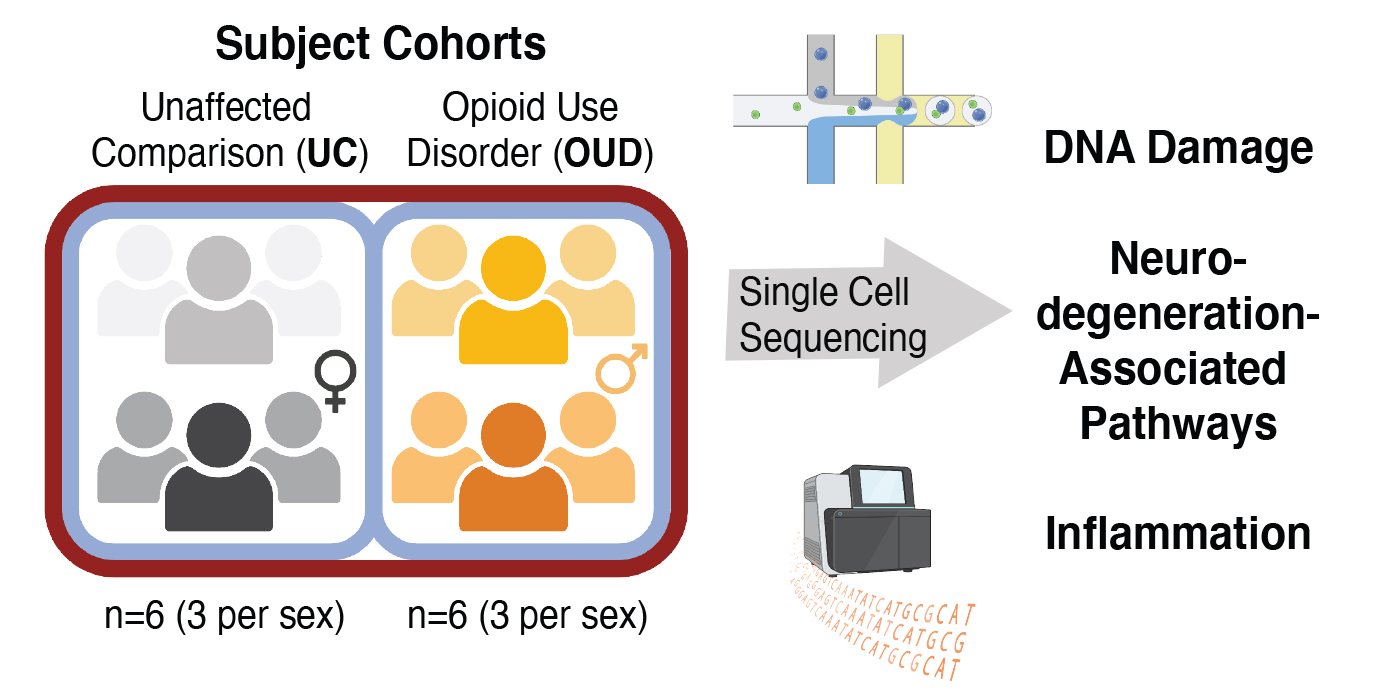Logan and Pfenning Labs Publish in Nature Communications
By Adam Kohlhaas

In a study published in Nature Communications titled, “Single nuclei transcriptomics in human and non-human primate striatum implicates neuronal DNA damage and proinflammatory signaling in opioid use disorder,” researchers, co-led by a graduate of the Joint Carnegie Mellon-University of Pittsburgh Ph.D. Program in Computational Biology, in the Ray and Stephanie Lane Computational Biology Department at Carnegie Mellon University, in collaboration with the Logan lab at the University of Massachusetts Chan Medical School and researchers at the University of Pittsburgh and McLean Hospital, have identified molecular pathways associated with Alzheimer's disease and Parkinson's disease in the brains of people with opioid use disorder.
"This publication is a culmination of an ongoing successful collaboration between our research groups in the pursuit of new treatments for opioid use disorder and opioid overdose," said Ryan Logan, one of the two corresponding senior authors of the paper.
The striatum, a brain region involved in reward and goal-directed behaviors, is linked to psychiatric disorders like opioid use disorder (OUD). Striatal dysfunction affects reward processing, habit formation and negative affect during withdrawal. Understanding the role of striatal subregions in reward behaviors and their potential associations with OUD requires molecular identification of specific striatal cell types. By comparing unaffected subjects to those with OUD, neuronal-specific differences were found in pathways related to neurodegeneration, interferon response and DNA damage. The study also identified sex-dependent differences in stress-induced transcript expression among astrocytes and oligodendrocytes from female subjects with OUD.
"When I first saw the results, I thought they could have come from the brains of subjects with Alzheimer’s disease or Parkinson’s disease," said Andreas Pfenning, one of the paper’s corresponding authors. "In developing treatments for opioid use disorder, we should be thinking about how to protect and repair the brain."
To access the publication, visit Nature Communications.